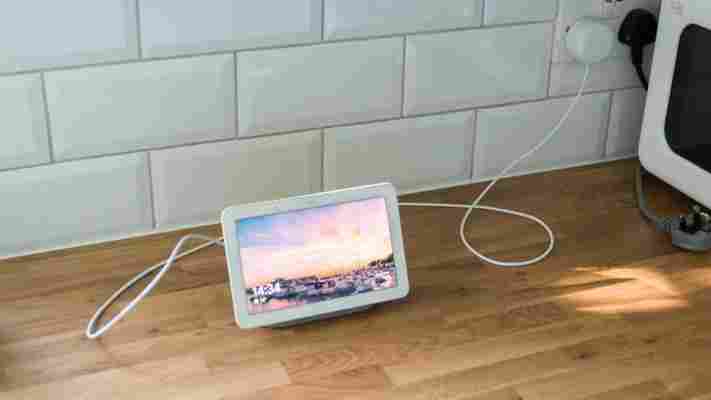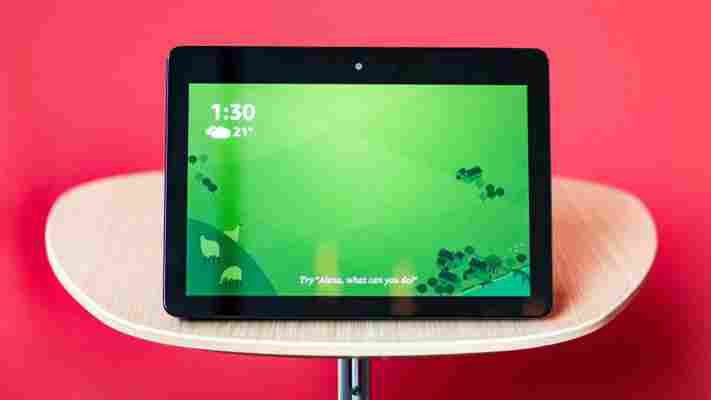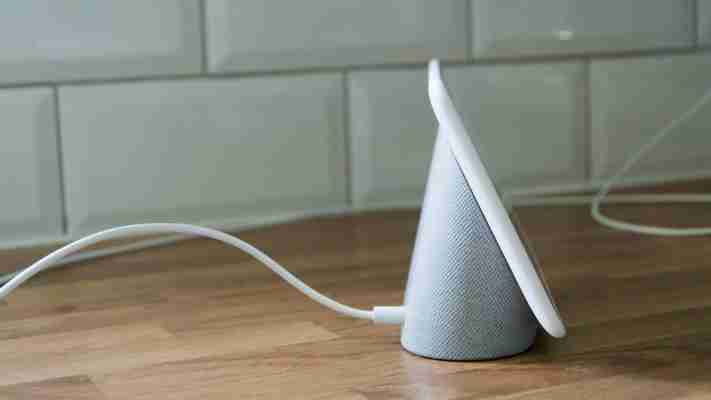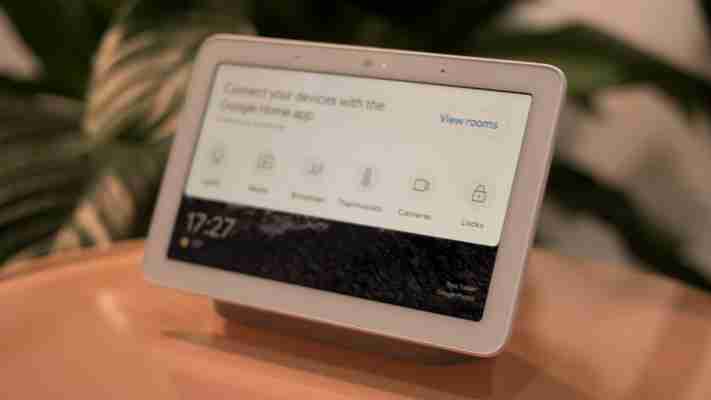The Google Home Hub – Google’s answer to the Amazon Echo Show – is here and it’s something of a revelation. It’s not surprising that the addition of a 7in display makes the smart screen more powerful than its smart speaker counterparts – that much is obvious – but until you’ve used it, you don’t quite know what you’re missing with the Home and Home Mini .
The Home Hub doesn’t feel like quite the finished article yet, but then nor do the company’s other Home-branded smart speakers. However, you can bet your bottom dollar that it’ll only get better with time as Google further refines its user experience and adds new functionality. Even in its current form, I believe the Home Hub is well worth the £140 asking price.
Buy now from John Lewis and Partners
Google Home Hub review: What you need to know
Google’s Home Hub is powered by the same virtual assistant that helps with everyday tasks both on your Android smartphone and the company’s range of smart speakers. The only difference is, being accompanied by a 7in touch-sensitive display, it can present info on screen, whether that’s the weather forecast, upcoming events or Google Maps directions.

Last, but not least, you can also use the Home Hub to make free audio calls to mobiles and landlines. It can also make video calls, although the recipient will be unable to see you (you can see them) because Google has decided not to include a camera. Depending on your opinions on privacy, that could be a good or a bad thing, but at least you never need to worry about the smart screen capturing any embarrassing images.
Google Home Hub review: Price and competition
The Google Home Hub costs £140 in the UK, making it the best-priced smart screen on the market. Indeed, it’s only £10 more than the original Google Home (£130) smart speaker and £260 less than the beefed-up Google Home Max (£400).

Its best-known rival is the all-new Amazon Echo, which has a 10in display and costs £220, while Lenovo’s Smart Display , available in both 8in and 10in versions, starts at £180. The JBL Link View is another third-party smart display that uses Google Assistant, but it’s not available in the UK. When it does hit our shores, I’d be surprised if it costs less than £180.
Google Home Hub review: Design and display
When I first took the Google Home Hub out of its box, I couldn't help thinking it resembles a 7in tablet stuck onto a large pumice stone. However, despite its appearance, the tablet is not removable and the chalk-coloured, stone-like rear is actually a speaker that doubles up as its stand.
Although it’s unlikely to win any design awards, the Home Hub is not a bad-looking device and, thanks to its diminutive size and footprint, it can easily be accommodated on any bedside table, kitchen worktop or sideboard without being overbearing. Indeed, when looking at it square-on, you can only really see the Home Hub’s display and not the slightly odd-shaped speaker behind it, making it look like any other small digital photo frame.
On its bezel, the Home Hub’s screen has a two-mic array for picking out your voice, but there’s no camera. Instead, there’s a light sensor in the middle that enables the Home Hub to alter the display’s brightness and white point based on the ambient light in the room.

Google calls this feature Ambient EQ and in practice it works very well, reducing the brightness to the extent that you’d be hard-pushed to know the images on display weren’t prints. This is great for making sure you don’t get too much blue light hitting the back of your retinas at night, but in darker environments, photos can often look as though they’d benefit from some additional backlight. If you find this to be the case, there’s a handy auto-brightness offset tool in the Home app or you can turn Ambient EQ off altogether.
As far as the 7in display is concerned, Google doesn’t list its resolution on the Home Hub’s web page, but the company has since told Expert Reviews that it’s a 1,024 x 600 panel. That’s a pretty low resolution compared to Lenovo’s 8in Smart Display, which has a 1,280 x 800 resolution screen and is on par with the first-gen Amazon Echo Show. As such, photos never look as sharp as they would on your smartphone or tablet, but as you’ll be viewing the Home Hub from further away, you’re less likely to notice. What’s more, it makes up for any lack of sharpness with colours that are both rich and accurate, and solid contrast levels.
Google Home Hub review: What does it do?
Most of what’s interesting about the Home Hub happens via its screen, but its core interface is pretty straightforward, displaying only weather info and upcoming events on the first page. Swiping shows recommendations from Spotify and YouTube, along with “Top stories for you”, which are also sourced from YouTube. The smart display also has two persistent cards showing tips for other things you can do with your Home Hub.
To open Home View, which lets you control your lights, media, thermostat and cameras all from one place (as well as letting you send “Broadcasts” to your other Home speakers), you simply swipe down from the top of the screen at any time. I’ve only used the Home Hub with other Google devices so far, such as the Chromecast and Chromecast Audio (we’ll be using it with smart lights and cameras soon), but it’s already obvious that it will make life much easier. It’s also helpful not having to remember the exact name of all of your smart devices.

Another standout feature is being able to find recipes and follow their step-by-step instructions on screen, but you can also benefit from seeing countdown timers, calculations, translations and to-do lists on screen. Sadly, though, although the Home Hub boasts that it can play live TV, I was disappointed to see this only works via YouTube.
That is unless you have your phone nearby, in which case you can cast from apps including BBC iPlayer, ITV Hub, BT Sport, and All 4. Strangley Netflix and Amazon Prime Video are not among this list, so fingers crossed we’ll see that rectified in the near future. For now, though, you can at least watch the news and other live TV from your Home Hub as you do the cooking.
In the simplest terms, having a screen helps you make decisions. Where you’d ordinarily need to know what you want to listen to and instruct your Google Home speaker accordingly, the Home Hub’s offers the luxury of recommendations. Say “OK Google, open Spotify”, for example, and it shows a number of albums and playlists based on your recent listening.
Perhaps my favourite thing about the Home Hub, though, is how it interfaces with Google Photos. Along with various other options, the Google Home mobile app lets you show albums from your Google Photos on the Home Hub (as well as the time and weather) when it’s not in use. It’s a very similar feature to that on the Chromecast, except that you’re actually likely to see your pictures on the Home Hub because the display is always turned on.
It might seem trivial, but with everyone taking more photos than ever, it’s incredibly easy to never revisit them. Being able to show your favourite snaps in a never-ending slideshow at the touch of a button ensures that’s not the case. And unlike naff digital photo frames of old, you can change the images that the Home Hub shows at the tap of a button – no messing around with memory sticks and SD cards.
Google Home Hub review: Sound quality
As you’d expect from a £130 device with such a small footprint, the Home Hub’s sound quality won’t blow you away. Having said that, for its size it’s decent enough and is a good step up on the Home Mini. Although there’s still a distinct lack of bass, mid-range frequencies and treble are nice and clear up to around 70% volume. Beyond this, the sound doesn’t distort too badly but simply becomes too harsh to enjoy listening to.
It’s perfectly adequate as a kitchen or bedside radio, but I wouldn’t recommend buying it as the main speaker for listening to music. For this, you’re better off picking up a Chromecast Audio to add to existing speakers and simply selecting it as the primary music output for your Home Hub. Alternatively, the Google Max remains the best-sounding of Google’s own smart speakers.
Google Home Hub review: Verdict
Bar a few small gripes with the way its software works – it seems impossible to clear recipes and videos you’re finished with manually, for example – my overall experience with the Home Hub has been overwhelmingly positive.
Swiping through its interface, it might not appear to offer a huge amount at first, but I’m confident this is a deliberate decision by Google to avoid blurring the lines between smart display and tablet, and overcomplicating the Home Hub at this early stage in its development.
After all, it achieves everything it sets out to do, which is to make it easier to interact with Google Assistant and to control all your smart devices from one place. Consider its low price and that it also doubles up as a brilliant digital photo frame, and it’s impossible not to recommend it as our pick of Google’s Home speakers.
